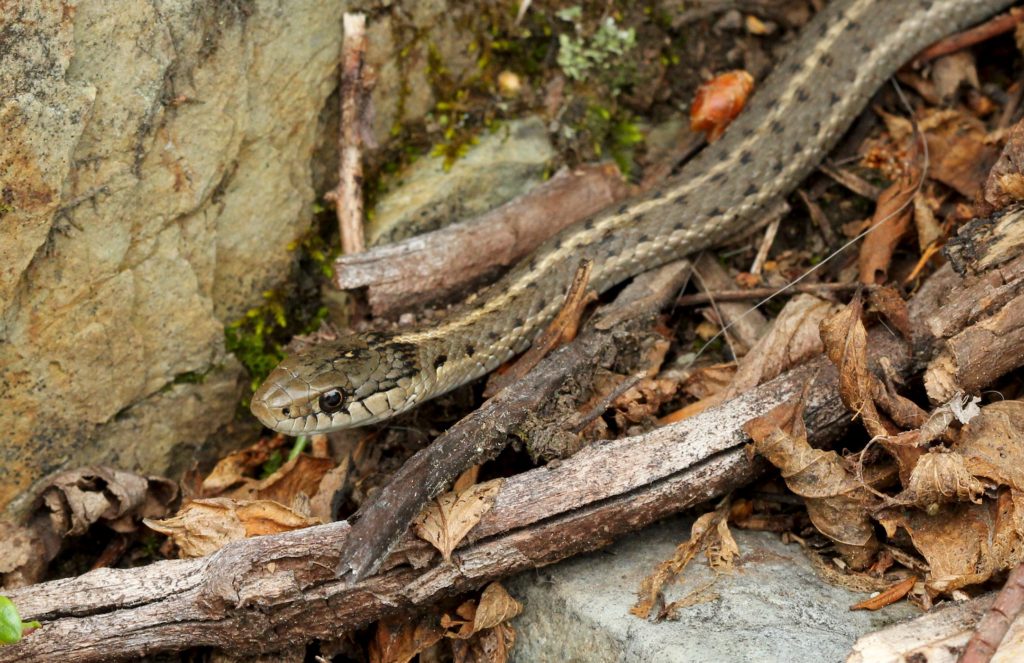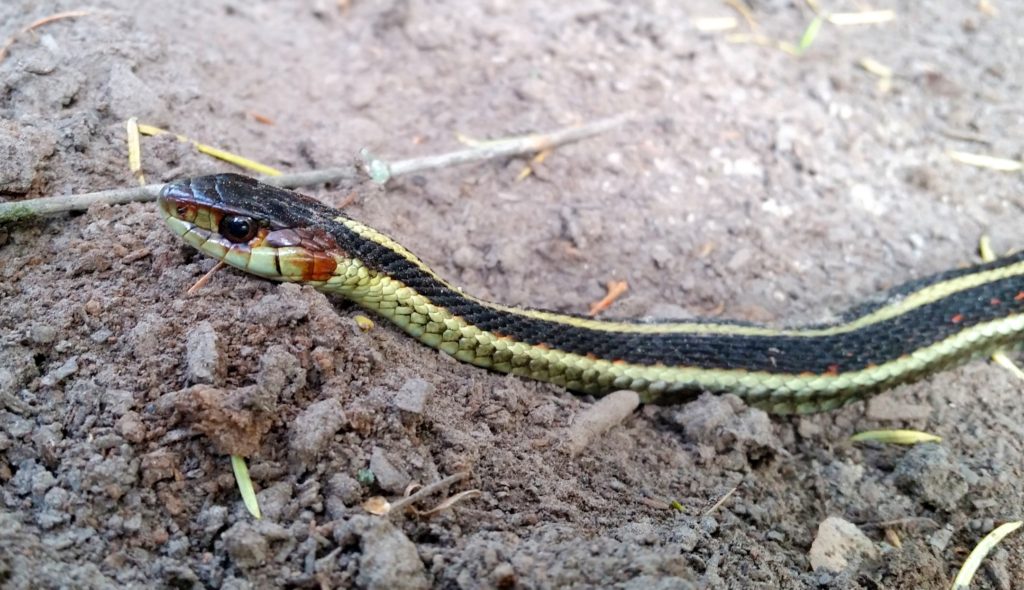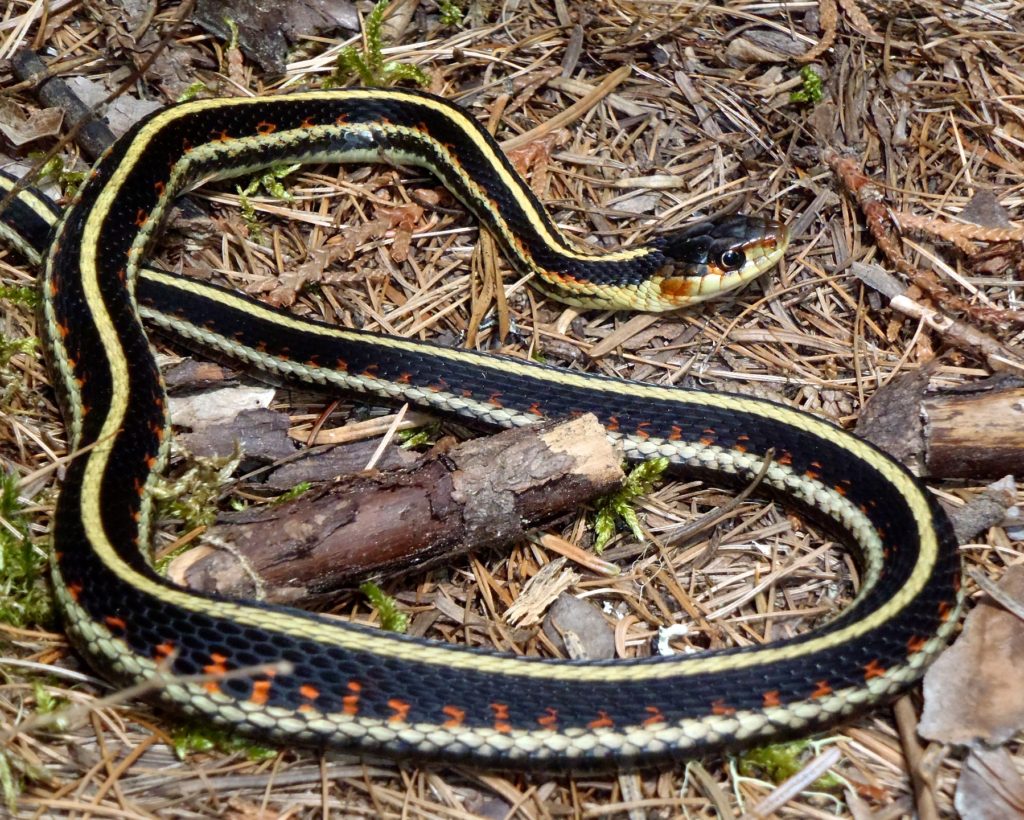Many animals expand their skin as they grow such as mice, birds and deer. Some insects, like a grasshopper, shed their exoskeletons (a rigid covering on the outside of some invertebrate animals) to grow larger.
Even though snakes are a vertebrate (an animal with a backbone) like deer, they shed their outer layer like a grasshopper in order to grow larger. However, they aren’t shedding an exoskeleton; they are shedding their skin which is composed of scales.

A snake’s scales are layers of keratin (like our fingernails) stacked on top of each other. The outer scales are dead while the scales underneath are living.
A fold of soft skin between the scales holds them together but it also allows the snake’s skin to expand when it eats a large meal. Since the scales can’t stretch, the folds of skin are stretched out to make more room.
This stretching is temporary and isn’t the way snakes grow bigger. Instead they shed their skin.
A few times a year a snake will shed its skin in a process called ecdysis. The process begins with a thin fluid forming between the old layer of scales and skin and the new layer of scales and skin. This fluid gives the snake a dull blue look.

During ecdysis, the snake’s eyes become cloudy and the snake is temporarily blinded.
Why? Snakes don’t have eyelids so their eyes are covered with clear ‘spectacle’ scales. Therefore, the fluid also covers the eye.
Right before the skin is shed, the liquid is absorbed and the spectacle scales clear up. Then the snake will rub against a rough surface to break the old skin near its head and proceed to slide out of its old skin.
Smaller snakes will shed their skin whole while larger snakes will shed their skin in pieces. The whole process can take up to 14 days.
With a new layer of scales, the snake will continue to be protected from rough surfaces, small predators and biting insects.
Have you ever found a shed snake skin?

Updated January 2024. Originally posted July 2020.




